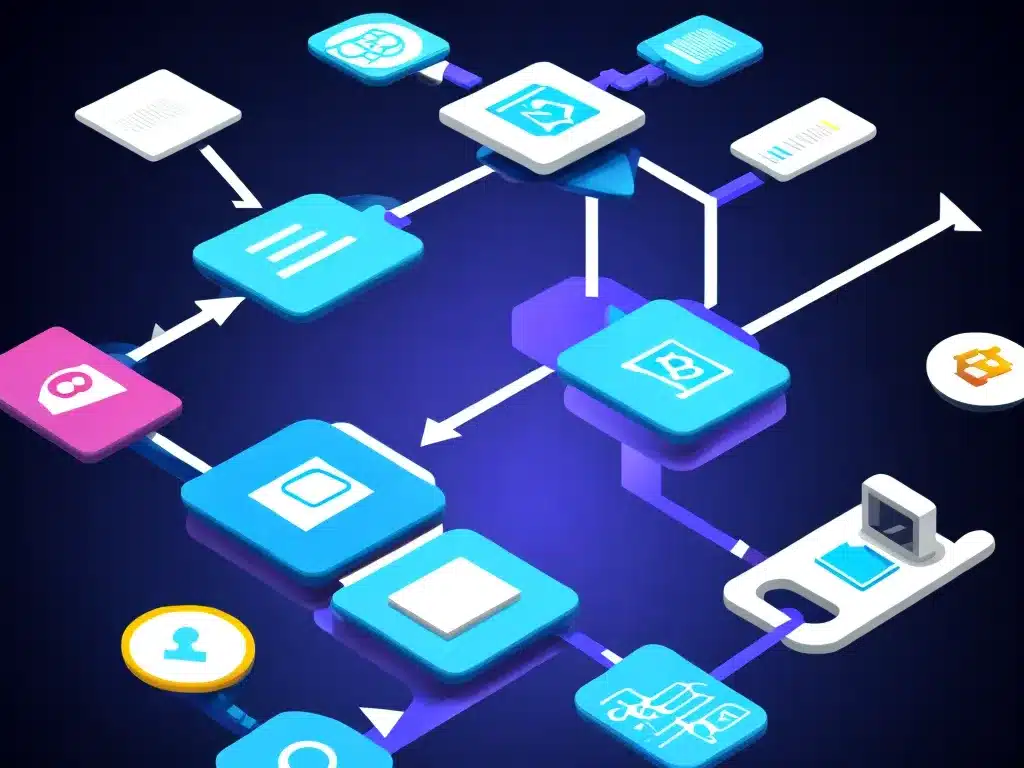What are blockchain-based identity management systems?
Blockchain-based identity management systems utilize blockchain technology to provide secure and decentralized identity management services. In these systems, digital identities are created and stored on the blockchain – a distributed ledger that is transparent, immutable, and cryptographically secure.
The main goal of blockchain-based identity management is to give users greater control over their personal data and digital identity, while also enabling trust and security through the inherent properties of blockchain technology.
Some key characteristics and benefits of blockchain-based identity systems include:
- Self-sovereign identity – Users have complete ownership and control over their identity and data. No centralized authority.
- Decentralization – Identities are stored on a decentralized network, removing single points of failure.
- Privacy and security – Cryptographic techniques like zero-knowledge proofs enable selective disclosure of identity data.
- Verifiable claims – Digital signatures enable users to prove certain identity attributes without revealing actual data.
- Portability – Identities are not tied to any single provider or application. Users can manage one identity across multiple platforms.
How do blockchain identity systems work?
At a high level, blockchain identity systems have three main components:
- Unique digital identifiers – Such as DIDs (Decentralized Identifiers) that uniquely identify a user. DIDs point to a DID document that contains metadata.
- Verifiable credentials – Tamper-proof digital credentials (like university degrees, KYC documents etc) issued and signed by trusted authorities that attest to user attributes.
- Wallets – Software applications that allow users to securely manage their keys, DID document, verifiable credentials etc.
The core workflow is:
- User generates a DID and DID document to represent their identity on the blockchain.
- Verifiable credentials are issued to the user’s DID by trusted authorities.
- User stores credentials in their wallet and can selectively disclose credentials to access services, without revealing actual data.
- Verifiers can cryptographically verify the credentials are valid, using the public key linked to the DID.
This allows the user to prove certain identity attributes in a secure and private manner. The blockchain serves as the decentralized trusted record of DIDs and verifiable claims.
What are the benefits of blockchain-based identity?
Some key benefits of blockchain identity systems compared to traditional identity models:
- User ownership – Users control their digital identity, not governments or corporations. Self-sovereign model.
- Selective disclosure – Only share the minimum data required for transactions. Enhanced privacy.
- Tamper-proof credentials – Digital credentials are verifiably issued and difficult to fake.
- Portability – Identity is not siloed. Can use same credentials across organizations.
- Censorship resistance – Identities are stored on decentralized networks without single point of control.
- Convenience – Potential to eliminate passwords with cryptographic signatures.
- Reduced fraud – Attribution of verifiable claims makes identity fraud much harder.
What are some examples of blockchain identity projects?
Some prominent examples of blockchain-based identity platforms and projects include:
- Sovrin – Uses decentralized identifiers (DIDs) anchored to the public Sovrin ledger. Focuses on self-sovereign identity.
- uPort – Ethereum-based platform for user-centric identity management using verifiable claims.
- Civic – Uses a blockchain-based identity platform for KYC and secure identity verification.
- Microsoft ION – Leverages the Bitcoin blockchain to create decentralized identifiers and verifiable credentials.
- Ontology – Provides distributed identity and data exchange frameworks using DLT. Aims to be interoperable across chains.
- Bloom – Platform for access management, identity security and cross-chain identity through reusable and extensible BloomID.
There are also projects leveraging blockchain for digital identity systems by governments like Dubai, Estonia, and Chile.
What are the challenges facing blockchain-based identity systems?
Some key challenges include:
- Mainstream adoption – Getting large networks and service providers to recognize blockchain-based identities.
- Usability – Managing keys, credentials etc can be complex for average users. UX needs improvement.
- Privacy concerns – Public ledgers mean potential privacy risks need to be mitigated.
- Regulations – Lack of regulations around digital identity and applicability of existing laws.
- Standards – Interoperability needs common standards and protocols to be widely adopted.
- Technical issues – Scaling to support billions of identities requires solutions like L2 protocols.
Overcoming these challenges will be crucial for decentralized digital identities to move towards mainstream adoption and use.
What does the future look like for blockchain-based identities?
The outlook seems positive for blockchain identity management systems. Here are a few potential trends:
- Wider adoption by governments and organizations as benefits become clear and technical capabilities mature.
- Hybrid models that bridge decentralized and centralized identity systems for maximum usability and compatibility.
- Deeper integration with IoT networks and mobile devices to enable identity-based interactions.
- Using AI/ML to provide personalized and context-aware identity capabilities.
- Interoperability standards will enable connection across different identity networks.
- Regulation will provide greater legal recognition and rights to users of decentralized identities.
Together with improved UX and scaling solutions, blockchain-based identity management could potentially become a mainstream alternative to traditional identity models in the future.













